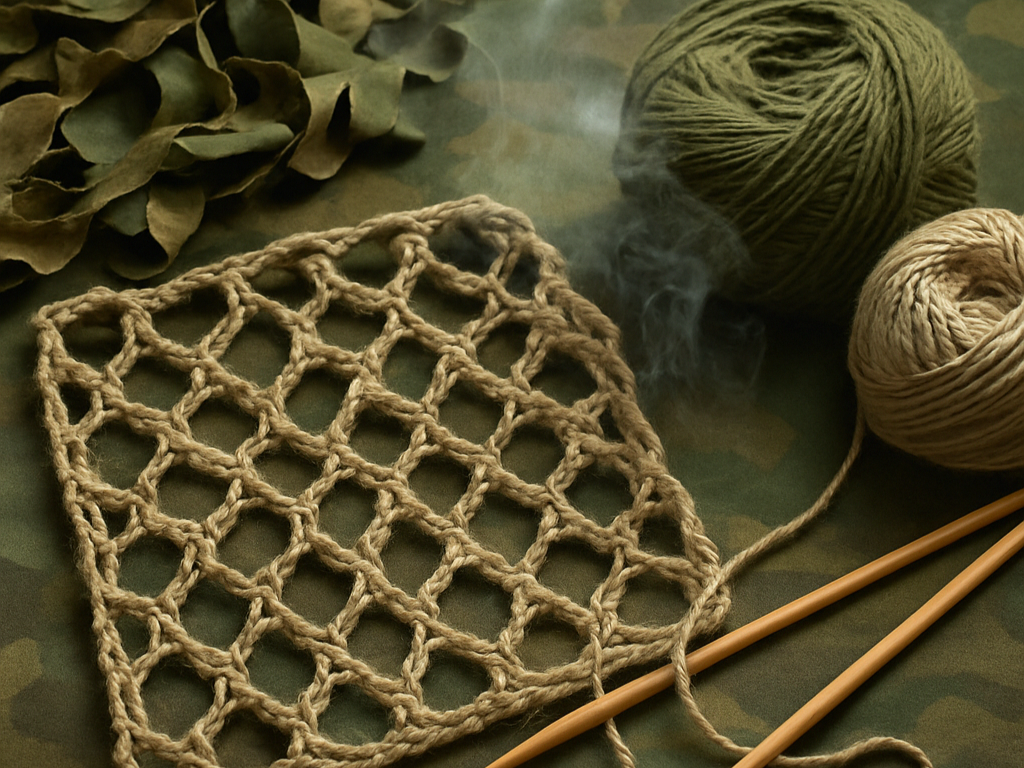#HistoryStitch: World War II: Knitting Camouflage Nets for Submarines

How home knitters supported the war effort with yarn and needles.
When we think of knitting, we usually imagine cozy sweaters or decorative scarves. But during one of the darkest chapters of history, knitting became a strategic skill – especially in creating camouflage nets for ships and submarines in World War II.
🪖 Knitting as a Civilian War Effort
The idea of knitting for soldiers wasn't new. It began during World War I and continued into World War II, where millions of women on the home front picked up their needles in service of their country.
One lesser-known yet crucial task: knitting camouflage netting.
The British government launched a national campaign called "Knitting for Victory", encouraging citizens to create warm garments and camouflage components for the military.
🧶 Camouflage Nets – Knitted or Not?
While most camouflage nets were knotted or woven, elements of knitting techniques were used – especially in embellishing or reinforcing sections with yarn.
These nets:
-
Were made from jute, sisal, or coarse plant fibers.
-
Included yarn scraps or fabric strips knotted or looped through mesh to break up outlines and disrupt reflections on ships or submarine domes.
-
Were often assembled by women working in community centers, church groups, or knitting circles using knowledge of stitch patterns and tension.
The goal: to mimic natural textures, distort outlines, and provide cover in various terrains – from forested coastlines to naval bases.
🔍 Historical Documentation
British military archives confirm the presence of:
-
"Net garnish" instructions for women volunteers,
-
Training sessions on "Knitting Camouflage", and
-
Personal letters from women serving in "camouflage netting units".
These activities weren't exclusive to Britain. Similar initiatives took place in the U.S. under the "Home Front Production" campaign – though American efforts were more industrialized.
In Britain, craftsmanship remained an essential part of the civilian contribution.
✍️ The Technique Behind the Nets
While the net base was often pre-fabricated, volunteers enhanced them using stitch-like techniques, including:
-
Loose knitting loops, reminiscent of drop-stitch textures,
-
Macramé-style knotting, and
-
Stranded or Fair Isle principles for adding irregular texture and dimension.
The hand-knit feel helped disguise patterns more naturally than machine-made materials could achieve at the time.
📅 What Remains Today?
Unfortunately, few original nets survive.
Most were destroyed, repurposed, or deteriorated over time. But the knowledge remains, and the story is increasingly being rediscovered by textile historians and heritage museums.
Today's makers can find inspiration in:
-
Modern camouflage yarns
-
Mesh-based designs
-
Revived military knitting patterns, reimagined for peace and reflection
🪢 My Takeaway: A Legacy in Loops
Knitting camouflage nets reminds us that handcrafts can be powerful tools – not just for warmth or beauty, but for survival, solidarity, and resilience.
In every stitch lies a message of purpose and connection – even if the yarn was once meant to disappear into the shadows.
💬 What do you think about this hidden chapter in knitting history?
I'd love to hear your thoughts!
#historymasche #HISTORYStitch #knittingforvictory #knittinghistory #strickenimtrend #craftandresistance
Every stitch tells a story. And sometimes, it's one the world almost forgot.
Yours,
Kathrin ☀️🧶
